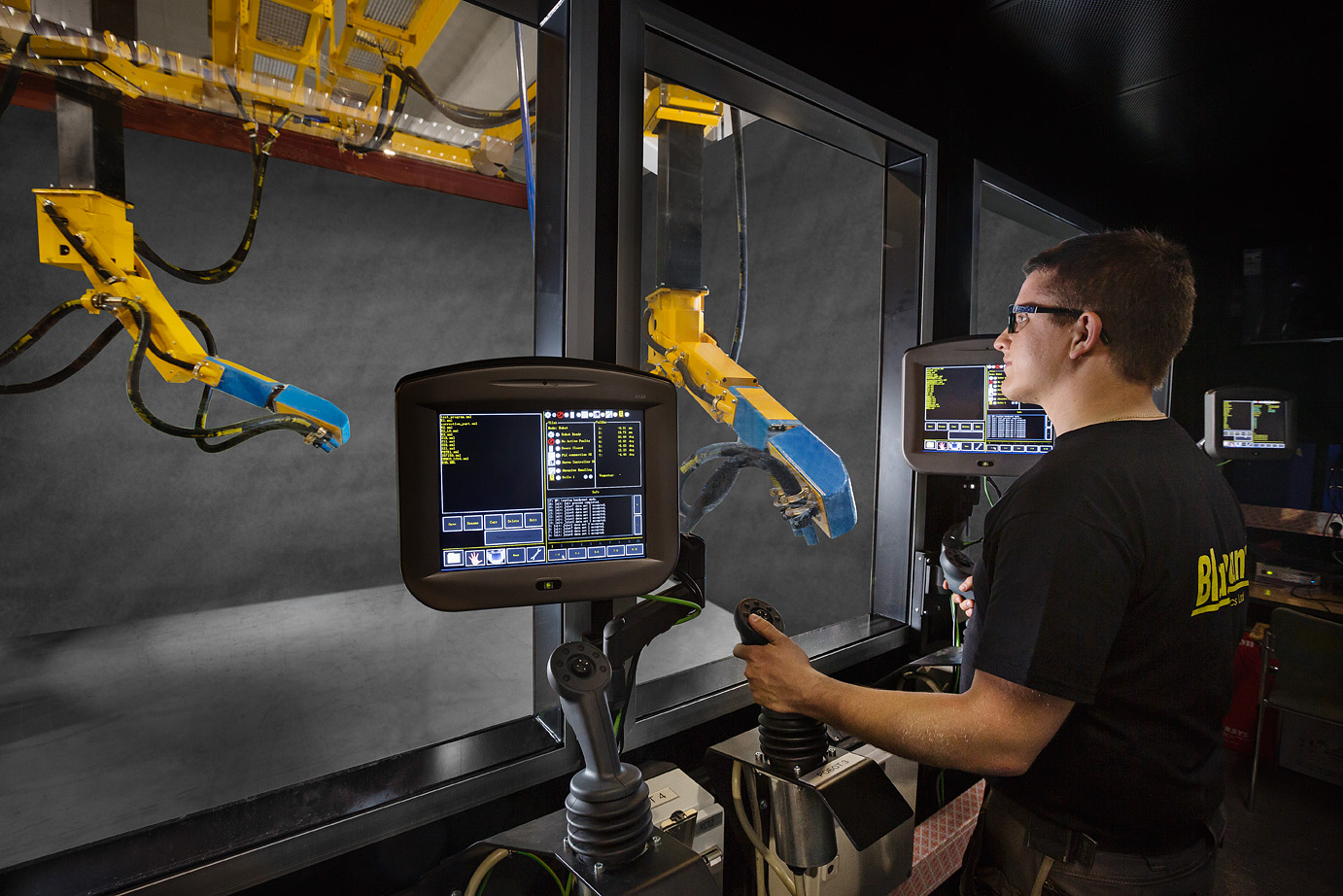GUIDE TO ROBOTIC ABRASIVE BLAST CLEANING part 1/2
GUIDE TO ROBOTIC ABRASIVE BLAST CLEANING part 1/2

Robotics and automatization are in growing demand around the world. Productivity requirements remain high with tight deadlines to meet. Quality control is stricter than ever. Difficulties in keeping staff and wanting to offer them a safe work environment. Listed above are just a few reasons that create the need for more sophisticated solutions.
Abrasive cleaning remains hard and tiresome work. How to be successful in bringing your employees out of the blast room and increase blast cleaning capacity and quality? This post and its sequel will help you get started with blast cleaning robotics.
1.1 What is an abrasive blasting robot?
The definition of a robot is a programmable machine capable of carrying out complex actions automatically. The difference to a standard mechanically automatized solution is the capability of creating a practically endless number of movement paths and programs. Blastman robots have typically 6-8 movement axes, they are gantry or wall-mounted and tailor-designed by customer requirements to have access around, above, below, and inside the workpiece. Programmability, repeatability, and flexibility with various abrasives and configurations of the robot allow maximum optimization for your blast room.
1.2 Quick principles of robotic blasting
Robotic blasting is air blasting. The principles behind air blast cleaning are the same in manual and robotic air blasting. Essential equipment such as blast hose, blast pot, and nozzle remain. The blasting results should be achieved quickly with the required quality. To reach set goals in blasting, process parameters need to be optimized. The most crucial process parameters are:

The blasting robot will take the blasting process to the next level and help with the complex shapes and size of the substrate (workpiece). The ultimate difference is replacing manual blasters from the chamber with a tireless, programmable robot that produces constantly repetitive quality and can hold up to 2 very large nozzles. A single robot can do the work of at least 4-10 manual blasters.
1.3 When to consider robotic abrasive blast cleaning?
Some of the most common industries for robotic blast cleaning include, but are not limited to, rolling stock, passenger coaches, foundries, steel structures, wind power, and power energy sectors. Below a list of typical challenges that are solved by Blastman robots:
- Reliable application for 24/7 mass production environment
- Demanding throughput requirements
- Workshops with various and ever-changing workpieces
- The requirement to turn the blast cleaning process fully automatic
- Removing injuries or even fatalities from the blast cleaning process
- The high turnover rate of workers and/or difficulties in finding manual labor
- Blast cleaning large workpieces that would require extensive set-ups when blast cleaned manually
- Quality control, constantly reaching required surface cleanliness
The 2nd part of this guide, coming out in early November 2020, takes you through the usual steps when starting to plan for a robotic solution in your facility.
Kristian Pietiläinen
Sales Manager, North America
Blastman Robotics Ltd
You might be interested in these articles
Company News
03. Apr 2025
BLASTMAN BLAST CLEANING ROBOTS IN DIFFERENT INDUSTRIES
Blog Posts Company News
01. Apr 2025
BLASTING ROBOTS PROMISE EFFICIENCY
Blog Posts Company News
13. Mar 2025
SUPPORTING GROWTH WITH AUTOMATED BLASTING
Company News Events
03. Mar 2025
Welcome to visit us at MECSPE, Bologna from March 5th to 7th.
Blog Posts Company News
12. Feb 2025
ROBOTIC ABRASIVE BLASTING IS AN EASIER CHOICE THAN YOU MIGHT THINK
Blog Posts Company News
22. Jan 2025
Leading the Future of Robotic Blasting
Blog Posts Company News Events
16. Dec 2024
